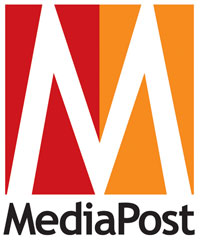- Digital Media Products, Strategy and Innovation by Kevin Anderson
- Posts
- Lack of priorities and alignment is driving product managers out of journalism
Lack of priorities and alignment is driving product managers out of journalism
How a small outlet found a good operational and engagement formula for TikTok
Product managers at publishers see a lot of room for improvement. Only 18% of 52 product managers surveyed by Brian Morrissey’s Rebooting thought their product implementation was excellent or good. A majority - 38% each - found it fine or needed improvement. Regarding funding, 51% thought they had too little funding, and 9% rated their funding as abysmal. The biggest challenge that product managers said they faced (32%) was misaligned incentives.
This echoes the findings of research I carried out for a master’s degree in innovation management and leadership from the University of York. (I graduated two years ago this week.) As I’ve mentioned before in the newsletter, my research looked at how the cross-functional work (boundary-spanning in academic terms) product managers did at news organisations affected their professional sense of well-being. Were they thriving, surviving or burning? I interviewed 17 product managers across broadcast, print and digital organisations, both large and small. Large being national news organisations and small being local or regional. While a relatively small sample, five had left roles or the industry entirely in the year before I interviewed them. Obviously this is important because while the news industry is looking to invest in their product management capacity, it’s difficult if they can’t retain staff.
As Brian found, lack of alignment was a major issue. Some of the themes that came out of the research were:
Lack of senior management support for cross-functional work
Lack of alignment amongst managers at different levels about goals and priorities
No support to set priorities or goals.
What resulted was that despite the talk about being audience-centred, product managers could be relagated to little more than project managers carrying out the initiatives of senior managers. “Decisions are made from the top down. ... We call it HPPO (pronounced hippo), the highest paid person’s opinion,” said a product manager who worked at a small broadcaster.
At best this left product managers with a feeling that they lacked agency. “You are at the center of decision making, when you often don't actually have the power to make the decision,” said a product manager at a small digital news outlet. This lack of agency raised issues for product leaders. “How can we motivate people to continue even working on this, if you know they see their colleagues not understanding the value?” a product manager at a small broadcaster said. This is leading to retention issues. One of the participants at a large newspaper said a colleague had left because “I was tired of taking orders and not feeling like I have any agency.”
Apart from retention, this lack of alignment leads to conflict and failed digital transformation issues. A product manager who had left a position at a large newspaper in the US said that senior leadership had failed to agree on goals. “(T)he goals that his manager had provided to guide product development had not been agreed upon by the newsroom.” People dug in, and when it became clear to him that his manager was not long for her position, he left, describing his experience as “searing”. It is an example of what Brian called “church-state”, editorial-business-techical divides that product teams need to navigate at news organisations.
This isn’t to say that product management has failed at news organisations. I also spoke to product leaders who were driving transformational change and delivering great audience-focused products. One product leader said that C-suite alignment on goals and priorities was critical. It gave product leaders a framework to say yes and, just as importantly, to say no.
This is just the tip of the iceberg. I found some other issues in my research, which I’ll discuss in the coming weeks. But for now, onto the links. In the world of AI and publishign, Perplexity is now offering a rev share with publishers. We are going to see a lot of different approaches as the big players in genAI strike deals to feed their models.
I am still adding to my knowledge about subscription operations, but as a recovering journalist, I had never heard of involentary churn - churn driven by failed payments - until I started doing more work on this part of publishing operations. More than just managing involuntary churn, this piece is worth reading because it highlights the rising importance of retention for publishers. In the State of Mobile Publishing Report we just released at Pugpig, one publisher we spoke to said they had to focus more on retention to combat “subscription fatigue”.
I had a slightly cynical response to this on first blush. “Oh look, they have reinvented the personal ad,” I thought, but it’s an interesting move for a public broadcaster.
US public media outlets continue to lay off staff. Southern California and LAist said the group faced a $4 to $5m budget shortfall over the coming two years. The group accepted 21 voluntary buyouts but also eliminated seven additional positions. The group is losing some amazing talent, including Ariel Zirulnick, director of news experimentation, who has been a leading figure in the engaged journalism movement in the US.
Scripts, shot lists and good planning go into making good videos for TikTok. For me, the important take away from this piece is how a small newsroom uses that planning to get the most out of every bit of media they create, not just for TikTok but for other platforms as well.
I had to check the date on this. In 2017, I wrote a report for the Reuters Institute about journalism formats that went beyond traditional storytelling, and VR was one of those formats. The New York Times gave away 1m Google Cardboard VR viewers that transformed your smartphone into a VR set, but to my knowledge, the NYT doesn’t produce VR content anymore. It fizzled. I’m not sure that we’re seeing a resurgence of VR storytelling from news orgs, but maybe the launch of Apple’s Vision Pro has publishers thinking again.




